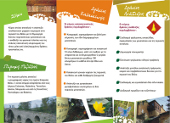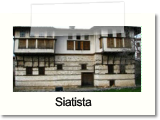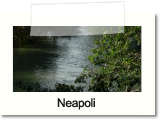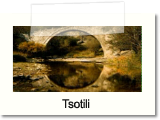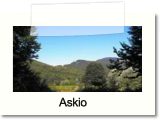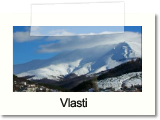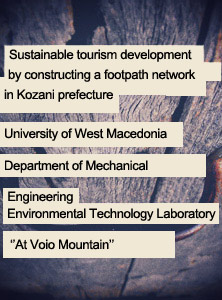
Volunteers
Meteorological indicators
| Fire Indicator |
| Fog Indicator |
News
Project presentation
FUNDING
Partners – Contact
The Bridge of Koiladi

The Bridge of Koiladi ![]()
In the semi-mountainous zone, in the drainage basin of the confluent of Velos, we find village Koiladi. A few meters after its last houses, the banks of a stream that locals call Tsavaleriotiko, are connected by a single-arched stone bridge. In 1905, after several floods that had destroyed the wooden bridges until then, the Islamized residents of Valaades decided to erect one made of stone. The project was assigned to artisans from Polykastano, who constructed deep foundations on the two opposing rocks and asked of the inhabitants to sacrifice an animal there, to ensure the stability of the bridge. The residents first proposed a rooster and then a sheep, but the artisans declined both offers, as they had their eyes set on the Hodja’s three-month old fatted calf that grazed nearby. Not wanting to reveal their true intentions, they announced that the river itself would decide what sacrifice it really desired. So, they waited for a rainy day and hearkened the buzz of water in the gorge. The sound resembled the bellow of a calf and thus the residents were convinced that the calf had to be sacrificed. In half a month the construction of the bridge had been concluded and it proved to be quite durable in the passage of time. For its construction, asbestos from location Paliokoulia of Polykastano was also used.
Its length is
GUIDE "IN PATHS OF VOIO"
Topics of Special Interest
- ‘‘Architecture - The Mastorokalfades of Voio’’
- ‘‘The Stony Bridges’’
- ‘‘The Villages of Voio’’
- ‘‘The Visitable Monasteries of Voio’’
- ‘‘The Primeval Oak Trees’’
- ‘‘Ontria – A Rare Geomorphological Phenomenon’’
- ‘‘Nature’s Wonders – Footsteps and Human-like Rocks’’
- ‘‘The Waterfalls of Skotomeno Nero – A Natural Monument’’
- ‘‘The Artificial Lake of Vythos – A New Wetland’’
- ‘‘River Pramoritsa and its Waterfalls’’
- ‘‘The Enormous Cliffs of Haros at Pyrgos Kotylis’’
- ‘‘The Peculiar Geology of Mount Voio – Rare Fossils’’
- ‘‘Voio and the Mushroom Madness’’
- ‘‘Voio - The People’’
- Zoupaniotikos Ailias – Voio’s trademark
- Taliaros and its Role during the Civil War
- Thematic Feasts in the Villages of Voio
- Ecology of Voio
- The European Path E6
- Paliokrimini and the Destroyed Village
- Local Products






